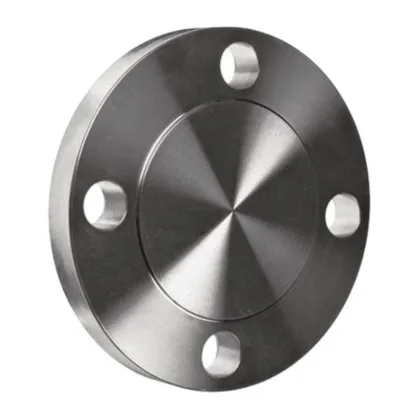-
Cangzhou Yulong Steel Co., Ltd.
-
Phone:
+86 13303177267 -
Email:
admin@ylsteelfittings.com
- English
- Arabic
- Italian
- Spanish
- Portuguese
- German
- kazakh
- Persian
- Greek
- French
- Russian
- Polish
- Thai
- Indonesian
- Vietnamese
- Zulu
- Korean
- Uzbek
- Hindi
- Serbian
- Malay
- Ukrainian
- Gujarati
- Haitian Creole
- hausa
- hawaiian
- Hebrew
- Miao
- Hungarian
- Icelandic
- igbo
- irish
- Japanese
- Javanese
- Kannada
- Khmer
- Rwandese
- Afrikaans
- Albanian
- Amharic
- Armenian
- Azerbaijani
- Basque
- Belarusian
- Bengali
- Bosnian
- Bulgarian
- Catalan
- Cebuano
- China
- China (Taiwan)
- Corsican
- Croatian
- Czech
- Danish
- Esperanto
- Estonian
- Finnish
- Frisian
- Galician
- Georgian
- Kurdish
- Kyrgyz
- Lao
- Latin
- Latvian
- Lithuanian
- Luxembourgish
- Macedonian
- Malgashi
- Malayalam
- Maltese
- Maori
- Marathi
- Mongolian
- Myanmar
- Nepali
- Norwegian
- Norwegian
- Occitan
- Pashto
- Dutch
- Punjabi
- Romanian
- Samoan
- Scottish Gaelic
- Sesotho
- Shona
- Sindhi
- Sinhala
- Slovak
- Slovenian
- Somali
- Sundanese
- Swahili
- Swedish
- Tagalog
- Tajik
- Tamil
- Tatar
- Telugu
- Turkish
- Turkmen
- Urdu
- Uighur
- Welsh
- Bantu
- Yiddish
- Yoruba

Oct . 21, 2024 09:22 Back to list
Understanding the Characteristics and Applications of Buttweld Pipe Systems
Understanding Buttweld Pipe An Essential Component in Piping Systems
In the world of piping systems, the use of various types of pipes and fittings is crucial for ensuring efficient fluid transport and maintaining the integrity of connections. Among the numerous types of fittings, buttweld pipes stand out due to their robust construction and reliable performance. This article delves into the characteristics, advantages, and applications of buttweld pipes, shedding light on why they are indispensable in various engineering and industrial sectors.
What is Buttweld Pipe?
Buttweld pipes are designed to be joined at the ends by welding, creating a seamless and strong connection. Typically manufactured from materials such as stainless steel, carbon steel, and alloy metals, buttweld pipes are available in various sizes and schedules. The welding process involves aligning the pipe ends and applying heat to fuse them together, yielding a joint that is generally stronger than the pipe itself. This method of joining is crucial in applications where high-pressure and high-temperature conditions are prevalent.
Key Characteristics of Buttweld Pipes
1. Durability Buttweld pipes are designed to withstand extreme conditions, including high pressures and temperatures. The welding process fortifies the joints, ensuring long-lasting durability and minimizing the risk of leaks.
2. Versatility These pipes can be manufactured in a wide array of diameters and wall thicknesses, making them suitable for a multitude of applications. Whether used for hydraulic systems, chemical processing, or oil and gas transportation, buttweld pipes can fulfill various requirements.
3. Resistance to Corrosion When made from stainless steel or alloy metals, buttweld pipes exhibit excellent resistance to corrosion. This property is vital in industries where pipes are exposed to aggressive chemicals or harsh environments.
4. Smooth Interior Surface The seamless nature of buttweld pipes results in a smooth inner surface, which reduces friction and allows for efficient fluid flow. This is particularly important in large-scale industrial applications where pressure loss needs to be minimized.
Advantages of Buttweld Pipes
Because of their unique characteristics, buttweld pipes offer several advantages, which have made them a preferred choice in many sectors
- Integrity of Joints The welding process guarantees a continuous flow of material without any interruptions, which is crucial in maintaining system integrity, especially in critical applications.
but weld pipe

- Reduced Risk of Leaks Unlike threaded or flanged connections, buttweld joints are less susceptible to leaks over time, which can prevent costly maintenance and operational downtimes.
- Cost-Effectiveness While the initial installation costs might be higher than other fittings, the long lifespan and reduced maintenance requirements of buttweld pipes typically translate to lower lifetime costs.
- Installation Flexibility Buttweld pipes can be customized during the welding process, allowing for various configurations that are not possible with prefabricated fittings.
Applications of Buttweld Pipes
Due to their reliability and strength, buttweld pipes are widely used across various industries, including
- Oil and Gas In the oil and gas sector, buttweld piping systems are essential for transporting crude oil, natural gas, and refined products from one location to another.
- Chemical Processing This industry relies on buttweld pipes to transport caustic materials safely, as the welded joints resist leakage and corrosion.
- Power Generation Buttweld pipes are vital in power plants, especially in the boiler and cooling systems, where they facilitate the efficient transport of steam and water.
- Water and Wastewater Management In municipal systems, buttweld pipes are used for both potable water distribution and wastewater treatment, ensuring effective flow management.
Conclusion
In summary, buttweld pipes are a crucial element of modern piping systems, offering exceptional durability, reliability, and versatility. Their ability to withstand harsh conditions and maintain system integrity makes them the preferred choice for numerous industries, from oil and gas to water management. As innovations continue to emerge in welding technology and pipe manufacturing, the significance of buttweld pipes in engineering applications will undoubtedly persist, ensuring efficient, safe, and sustainable fluid transport globally. As industries evolve, so will the importance of understanding and utilizing buttweld piping systems, highlighting the need for ongoing education and advancement in this critical field.
Latest news
-
ANSI 150P SS304 SO FLANGE
NewsFeb.14,2025
-
ASTM A333GR6 STEEL PIPE
NewsJan.20,2025
-
ANSI B16.5 WELDING NECK FLANGE
NewsJan.15,2026
-
ANSI B16.5 SLIP-ON FLANGE
NewsApr.19,2024
-
SABS 1123 FLANGE
NewsJan.15,2025
-
DIN86044 PLATE FLANGE
NewsApr.19,2024
-
DIN2527 BLIND FLANGE
NewsApr.12,2024
-
JIS B2311 Butt-Welding Fittings LR/SR 45°/90° /180°Seamless/Weld
NewsApr.23,2024











